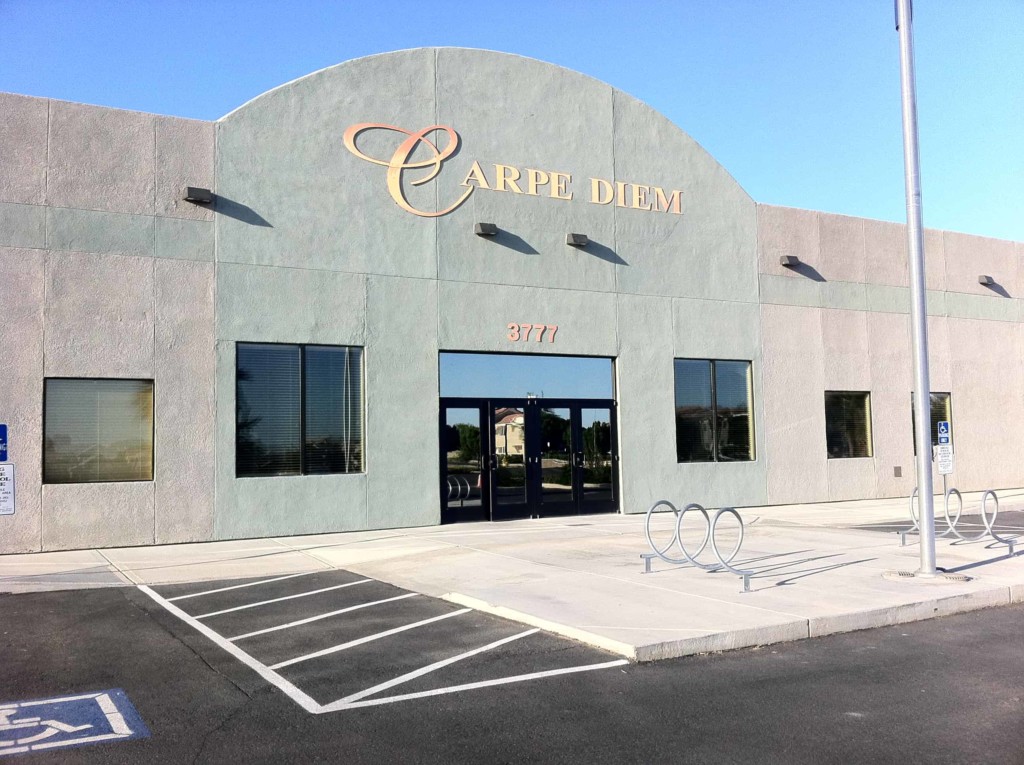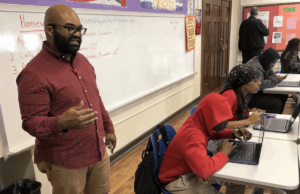Carpe Diem: the best of school leadership and management

Unlike most high schools, you can’t spot it from the air—there’s no football field or baseball diamond. From the street, the concrete tilt-up looks more like a big box retail store than a school. From the front door, you can see the whole thing—a big open Learning Center surrounded by glass classrooms.
More than 300 students from grade 6 to 12 start showing up at 7am. They are all hard at work by 8am—most in a cubicle on a computer screen, some in workshops. Students put in a full 8 hours Monday-Thursday. Friday school is for kids that need more time.
Carpe Diem, a charter secondary school in Yuma Arizona, uses an online learning system called e2020 for primary instructional delivery. It’s not as engaging as some web 2.0 components and apps, but it is comprehensive and offers a strong management and monitoring system. This week, students at Carpe Diem had the opportunity to provide direct feedback to the vendor (so watch for shorter and better instructional videos from e2020!).
The goal at Carpe Diem is to get students to take responsibility for their own learning and e2020 facilitates ownership and independence quite well. Daily or weekly notifications to students and parents mark progress and allow the school’s Course Manager to track all 300 students.
While it’s true that most of the learning is done independently and online, a talented group of teachers play an integral role in the school’s academic success. Founder and director Rick Ogsten says, “Rather than nursing students to passing grades, teachers here act as doctors creating surgical interventions or as personal trainers extending and deepening learning.
On a typical day, Teachers run a series of topical workshops. If a teacher is out sick, there are no workshops in that subject on that day (no subs here). One math, one science, and one social studies teacher ensure the progress of all 300 students.
Carpe Diem is a good example of blending multiple modes of instruction to boost learning and sustainability. The mix of online learning and teacher-driven workshops is quite effective, but the culture is the secret sauce.
Ogsten has pieced together the best of his training in the military and preparation as a marriage counselor to mold a very productive and supportive school culture. The staff gives students a good deal of freedom to manage their time. When you circle the bullpen-style Learning Center, not every student looks fully engaged—some heads on desks, some text messaging, a few computer games—but their progress is carefully monitored. The results-focused culture creates responsibility and encourages peer support. When issues arise, the Carpe Diem staff astutely deflects conflict while researching context. No hall passes required here.
Most students progress in cohorts (as opposed to a fully individualize progress model that you’d see at AdvancePath) which leverages workshop interaction and peer learning. But there are no barriers to accelerated progress—students can move ahead and take more advanced classes. Carpe Diem still faces Arizona’s seat time requirements which Rick finds “a disgrace.”
Students with special learning needs typically benefit from the customization at Carpe Diem and are performing nearly as well as the general population. Rick finds that students that arrive with labels often have unaddressed learning gaps.
There’s no jock clique and no cheer squad at Carpe Diem. There are students and parent organized clubs but no organized athletics.
With Innosights’s Rise of Blended Learning report, Carpe Diem looks like an over night success, but it’s been a decade in the making. Seven years ago, Ogsted was running a traditional secondary school, but budget, academic, and facilities concerns caused him to flip to a blended model. Four years of trial and error resulted in the current model. Carpe Diem boosts the state’s best math results and an impressive 93% cohort graduation rate.
Carpe Diem is an innovative design that leverages computer-based instruction. Ogsten is clearly a leader in the exploding blended learning space. His new iSchool 2020—a statewide virtual school with a cool drop-in campus in Scottsdale—continues to push back the boundaries of school design. But Carpe Diem is a very well run school with a powerful performance-based culture. It is this mixture of leadership and management—innovation and execution—that really sets this school apart.
Rick got a call from the Yuma Chamber this week. They just figured out that Carpe Diem is a top visitor attraction. It’s worth the trip.








0 Comments
Leave a Comment
Your email address will not be published. All fields are required.